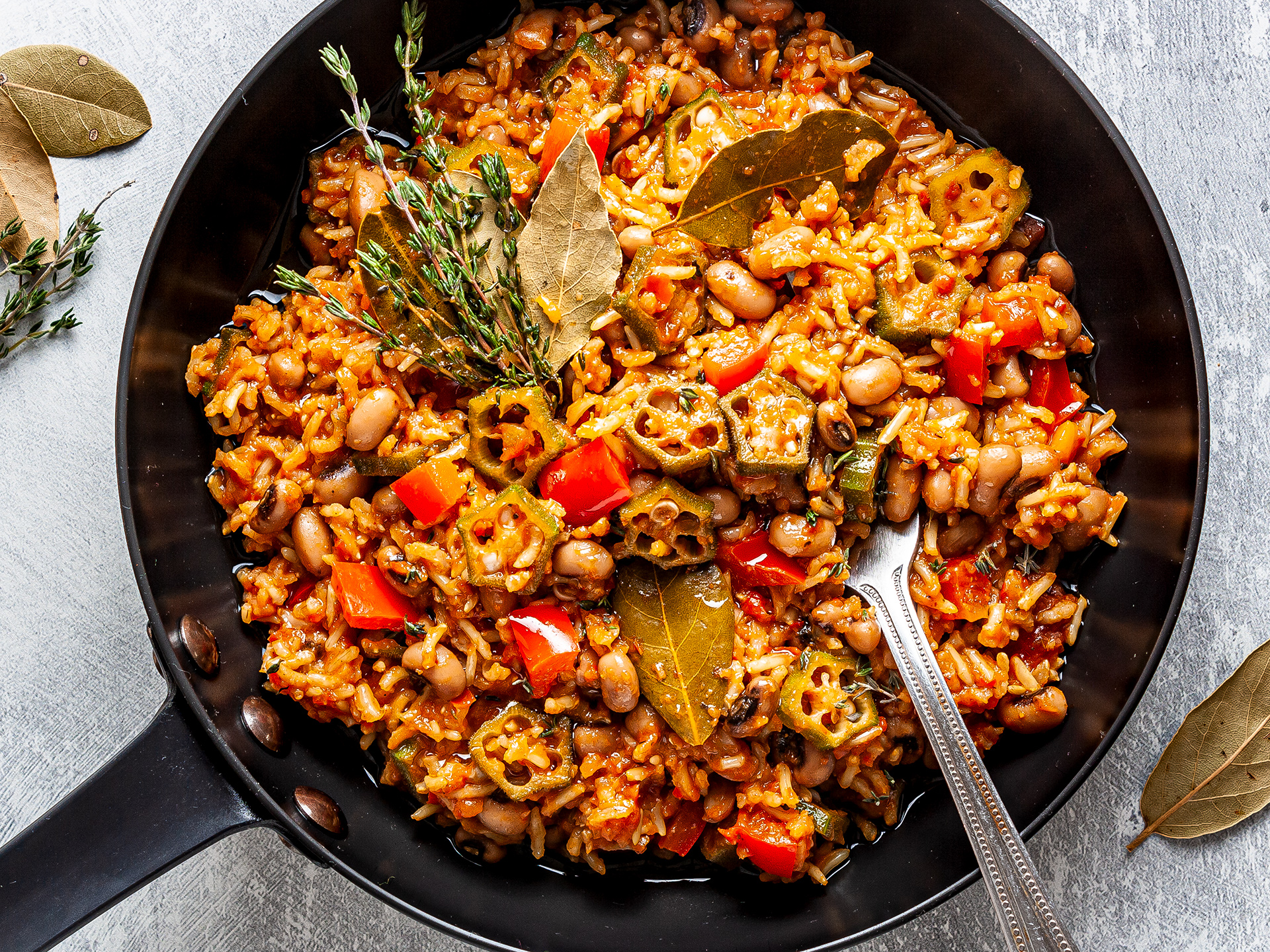Jollof rice is a staple dish in Western African regions, particularly in Nigeria and Ghana.
It's a one-pot rice dish cooked with a spicy tomato sauce and often served with chicken or other cuts of meat.
We have replaced the meat with black-eyed peas to give you a tasty vegan alternative to this flavourful meal.
What sets Jollof rice apart from other similar dishes is the richness of the rice itself. When eating your favourite curry, have you ever finished the condiment before the rice?
Going through that plain rice after such a flavourful sauce is always a bit disappointing. With Jollof rice, that won't happen!
Here, we let the rice boil right into the rich tomato sauce, soaking in all the flavour and becoming one with it.
And we aren't talking about plain tomato sauce here.
There are such diverse regional spices, herbs, and veggies coming together in this dish, like the fiery scotch bonnet chilli, grassy okra and pungent ginger root.
With a serving of black-eyed peas, we added a generous amount of plant-based proteins to the dish, turning it into a complete one-pot meal.
With a bowl, you'll get 35% of your protein RDI, 35% of your fibre RDI, and 25% of your carbs RDI. Perfectly balanced.
And because the rice is so flavourful, it's tasty both hot and cold. So whether you have it right away or pack it into tomorrow's lunch box, make it a jolly day with your Jollof rice! (sorry, we couldn't resist!).
And you know what goes really well with a bowl of jollof rice? A traditional Nigerian vegetable salad, a spicy African stew like this spinach stew or yam stew, or these healthy plantain chips!
Or why not try another African seasoned rice next? This spiced Kenyan pilau recipe is just perfect!
What type of rice should I use to make Jollof?
The traditional Jollof recipe uses long-grain rice.
The Nigerian Jollof uses parboiled long-gain rice that has been rinsed properly to remove the extra starch. This rice is less sticky but soggier, allowing it to absorb the sauce more easily.
Ghanaian Jollof instead prefers to use long-grained rice with higher starch content, like basmati rice. This rice is light and fluffy and does not absorb as much sauce.
Jollof rice is a famous dish in other Western African regions too, and they all make slight changes to the ingredients used. But we only tried the Nigerian and Ghanian versions, so we've only talked about them here.
In this recipe, we used the parboiled version, and we rinsed it thoroughly. So we called our Jollof rice "Nigerian-style". If you are using basmati, you can follow the same recipe without rinsing the rice, and you may have to cook it a bit longer.
So it's parboiled vs basmati. Which one should you choose? We suggest using whichever variety you are most familiar with so that you don't risk over/undercooking it. If you don't have a preference, go for whatever long-grain rice you find, and you'll be fine. The change in taste will be rather minimal.
If, instead, you want to be a part of the big contest on who makes the best Jollof rice, then try both and cast your vote!
Is this recipe healthy?
Jollof rice ingredients are by themselves healthy. So if you don't follow any recipes that suggest using butter instead of oil, you'll be fine eating Jollof rice in normal quantities and regularly.
There are things you can do to make this recipe even healthier, though. You could use a long-grained brown rice variety, which is less processed and has more fibres than white rice. Or if you want to control your calorie intake, make this recipe keto by replacing rice with shredded cauliflower florets (AKA cauliflower rice) and the beans with diced tofu.
Is Jollof rice very spicy?
Jollof rice is spicy, as in, it uses lots of spices! But it's also very, very hot.
One of the dominant ingredients in this recipe is the Scotch Bonnet Chilli. This chilli is extremely hot, especially if you keep the seeds in.
If you love super-fiery food and you can take it, go ahead and follow our recipe above.
Instead, if you want to dial it down a bit, remove the seeds before blitzing the chilli.
Ingredients
| Canned Chopped Tomatoes | 400 g |
| Red Peppers | 2 |
| Red Onions | 1 |
| Garlic Cloves | 2 |
| Scotch Bonnet Chillies | 1 |
| Rapeseed Oil | 2 tbsp |
| Curry Powder | 1 tbsp |
| Smoked Paprika | 1 tsp |
| Grated Ginger Root | 1 tsp |
| Dried Thyme | 1 tsp |
| Parboiled Long-Grain Brown Rice | 260 g |
| Bay Leaves | 4 |
| Canned Black-Eyed Peas | 480 g |
| Okra | 90 g |
Step 1
In a food processor, add the chopped tomatoes, 1 red pepper, onion, garlic, and scotch bonnet chilli.
The scotch bonnet is quite spicy, so, if you think you can't handle it, then remove the seeds before adding it to the blender.
Then, blitz all into a smooth paste.
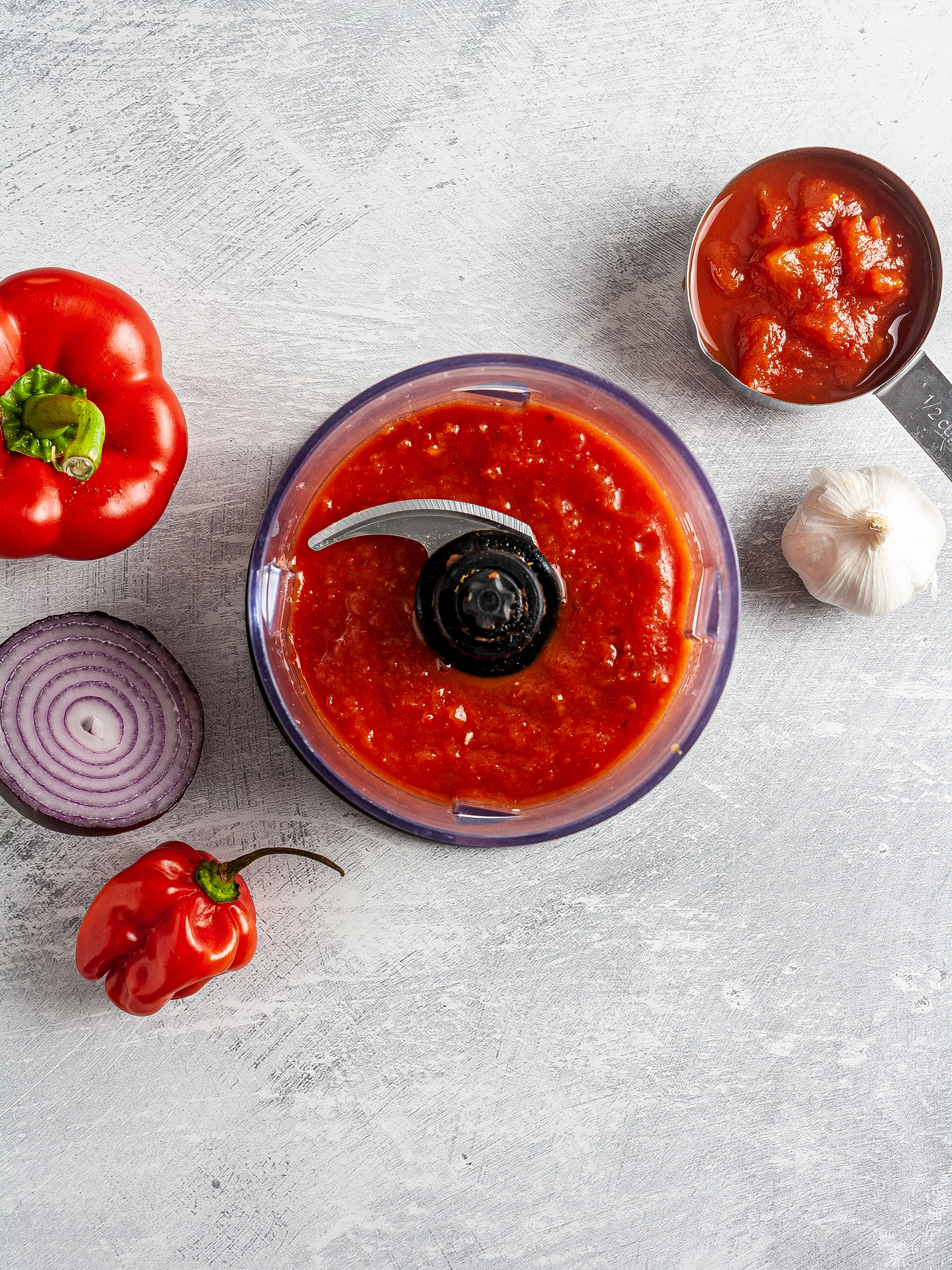
Step 2
Now, heat the vegetable oil in a skillet and pour in the tomato purée. Add the curry powder, smoked paprika, dried thyme, and grated ginger root.
Give all a good stir and cook for 5 minutes over medium heat.
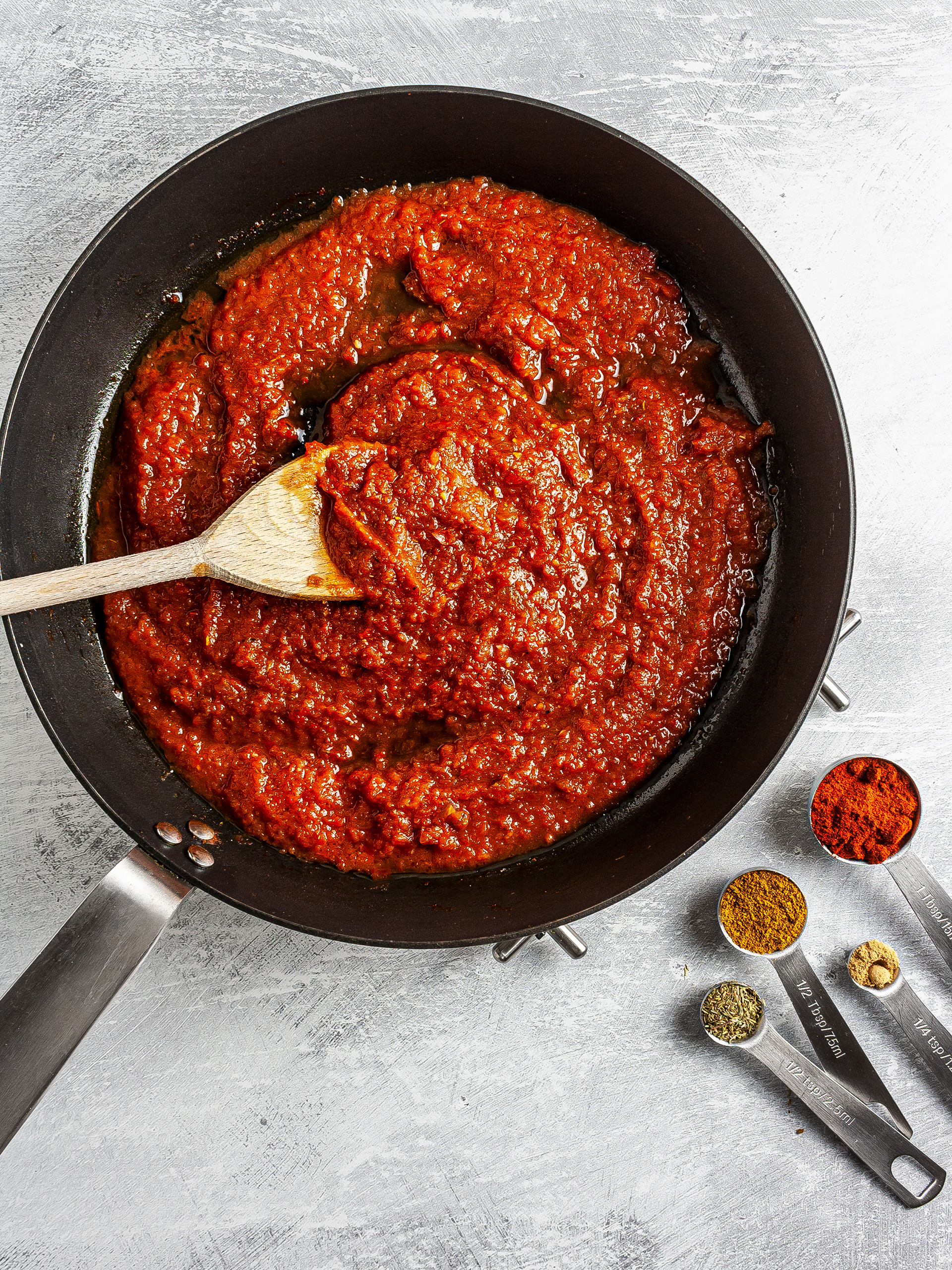
Step 3
Next, rinse and drain the parboiled rice a few times or until the water runs clear. Then, add it to the sauce along with bay leaves.
Cover with enough water to completely submerge the rice.
Bring to a boil over medium heat and simmer the Jollof for 15 minutes, covered, stirring occasionally.
If the broth reduces too quickly and rice sticks to the bottom of the pan, add more water and keep it covered.
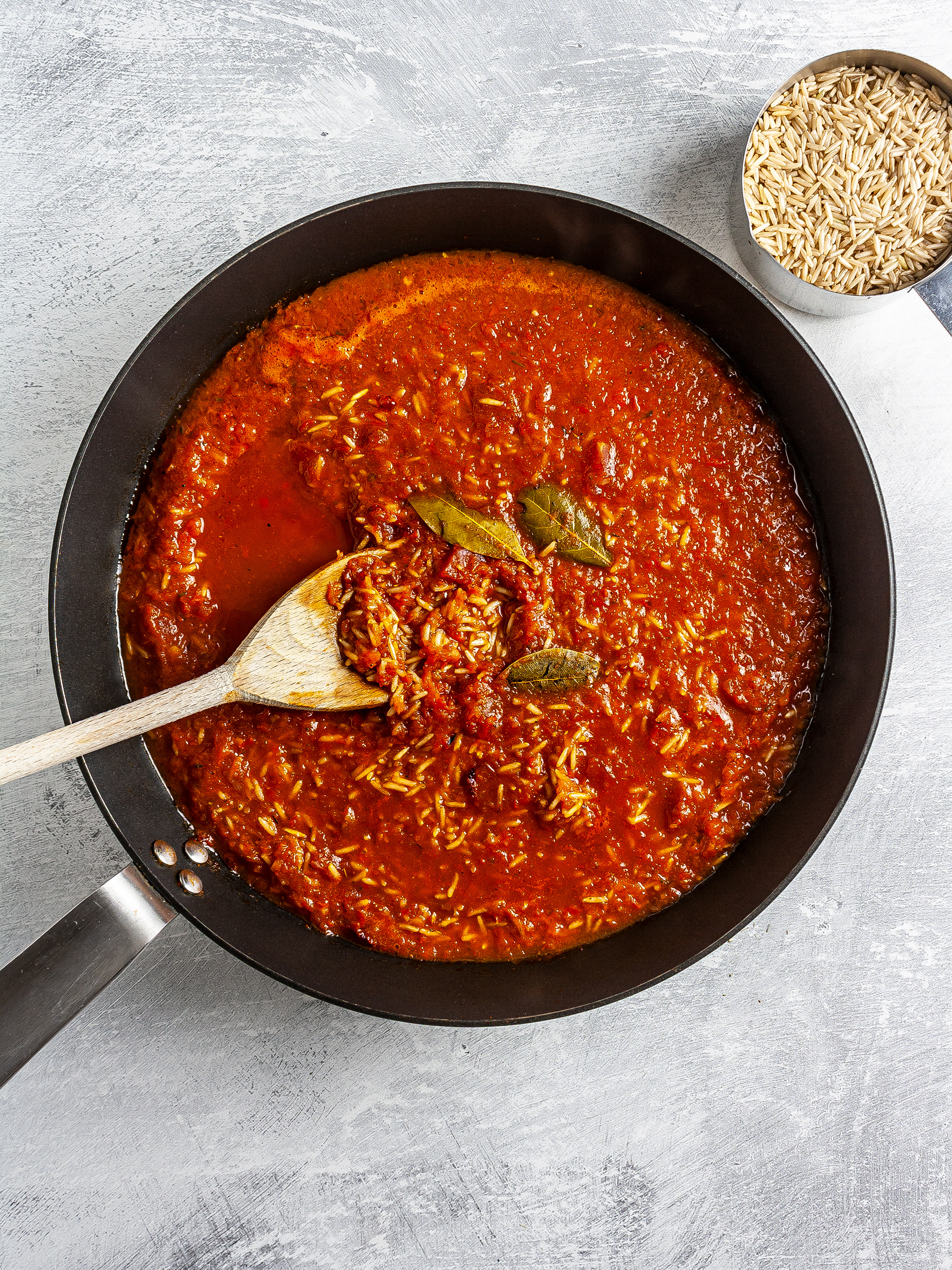
Step 4
Now, drain and rinse the canned black-eyed peas and stir them into the rice.
Then, tip in the remaining 1 red pepper, diced into cubes, and the okra, thinly sliced.
Cook all for a further 10 minutes or until the vegetables and rice are soft, and the sauce has reduced.
Finally, season with salt and pepper to taste and garnish with extra thyme before serving.
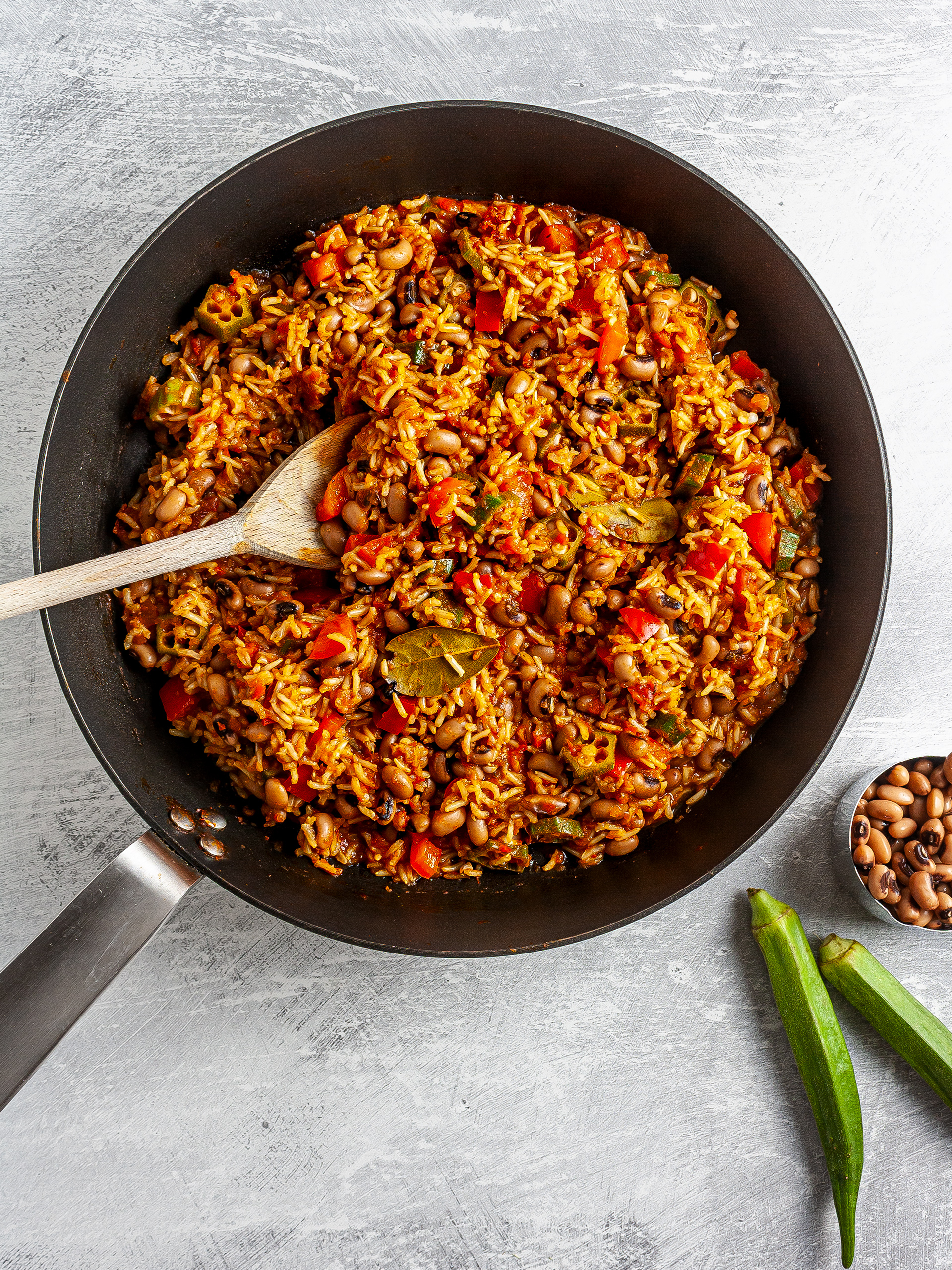
Tips
Instead of okra, you can use zucchini or eggplants.
Feel free to swap black-eyed peas with other legumes like red kidney beans, yellow split peas, or lentils.
Keep any leftover Jollof rice in an airtight container in the fridge and store for up to 3 days or freeze for 4 weeks.
